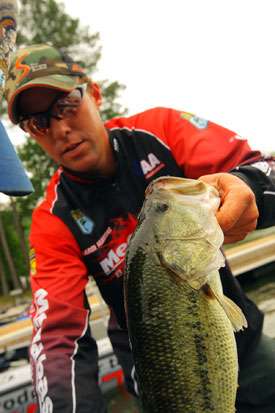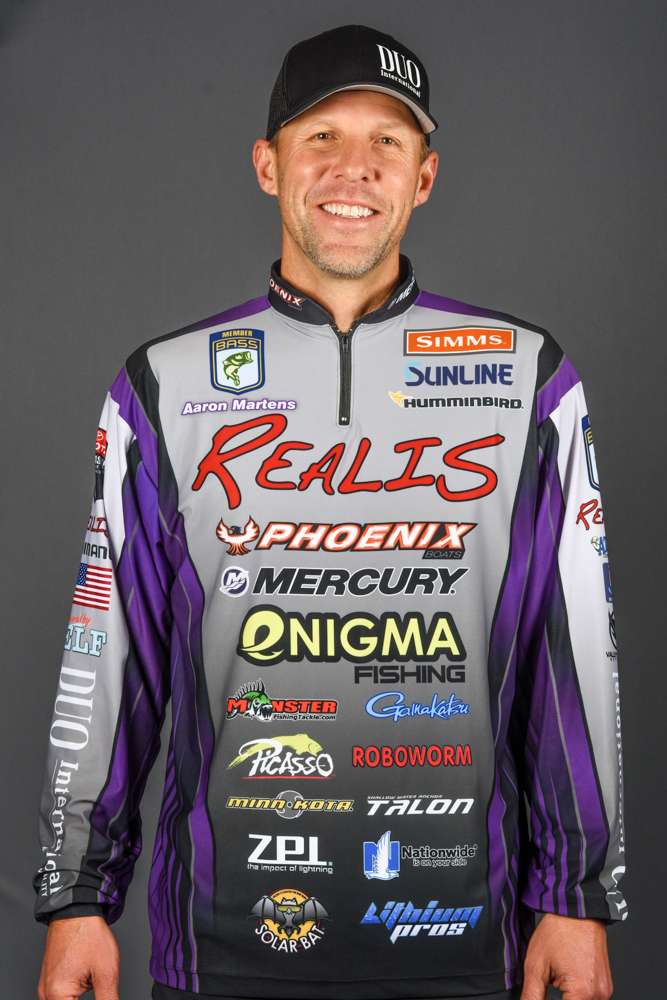
Some guys might consider this chapter to be controversial. I don’t want to be controversial, but, at the same time, it’s important to tell the truth. And, the truth is the uni knot and the Snell are much better than the popular Palomar knot for strength and durability, especially when you’re fishing with braid or fluorocarbon.
Let’s look at braid first. I use a lot of lighter test weight braid. We all know getting a knot to hold with it can be a pain. I’ve solved that problem by using a single uni knot with 10 to 14 wraps. It’s stronger than anything else I’ve ever used and it almost never slips, even with slick line.
Another big advantage to the single uni knot is its small size. Basically, all it does is double the diameter of your line. That’s a big help when you’re fishing grass and slime. It slips right through everything and hardly ever messes up your lure. That’s a big advantage over the course of a whole day on the water. It gives you a lot more chances to catch a fish.
I also like the single uni knot with fluorocarbon line for the same reasons. But, and this is important, only make seven or eight wraps. More than that will weaken your knot and subject you to break-offs. That’s not a good thing.
One thing I want to mention at this point is that the uni knot isn’t really one knot. It’s a system of knots that’ll do just about anything you can imagine. I’m only talking about tying your line to terminal tackle — hooks, lures and stuff like that. You might want to consider using the whole system for all your knot needs.
Another knot to think about is the Snell. It’s almost a lost art among bass anglers these days. That’s a shame because it’s probably the best knot you can use on hooks — flipping and pitching — as well as many topwater baits.
A Snell is strong and it creates a straight pull from your hook to your line and on back to your rod. You won’t believe how much your hooking percentage will increase when you use one. I highly recommend you learn how to do it and then give it a try. You’ll be amazed at how great it really is once you get used to using it. (With some practice you can learn to Snell with a uni knot.)
To be fair, I suppose a Palomar is OK with monofilament. I know lots of guys use them. Nevertheless, I think the uni or a Snell is better. I know a lot of you are going to say my knots take too long to tie. That’s bunk. And some of you are going to say the Palomar is the strongest knot around. That’s bunk, too.
I can tie a uni knot or Snell a hook just as fast as anyone can tie a Palomar. It’s a matter of practice and concentration. Besides, how often do you retie with braid anyway? Fluorocarbon will last almost as long if you start with the right knot. Time is important, but so is not breaking off fish.
There’s a lot of misinformation about knot strength going around as well. To begin with, most guys test their knots with a straight pull. They don’t do a shock test, nor do they tie a 5-pound weight on their line and drop it to see what happens.
If they did those things, I guarantee you they’d see different results. The strength of a Palomar is nothing close to a uni knot or a Snell under those conditions. When’s the last time a fish gave you a slow, steady pull? Never is probably your answer. My knots are for the real world.
Now, we all know different lines tie differently and different anglers like different stuff. All I’m saying is give my knots a try with the line you like best. (That should be Sunline.) Don’t get stuck thinking the only knot that’s worth tying is a Palomar. It isn’t.
There are some good knot-tying videos on YouTube that’ll help you get started. Take advantage of them





